How to Grow and Care for Strawberries: Essential Secrets for Thriving Plants
- April 30, 2024
- 0 comment
Learn how to grow and care for strawberries with our essential secrets for thriving plants. Achieve a lush, fruitful harvest. Dive into the essential guide on how to grow and care for strawberries! This comprehensive resource is designed for gardeners of all skill levels, providing crucial insights and best practices to ensure your strawberry plants flourish.
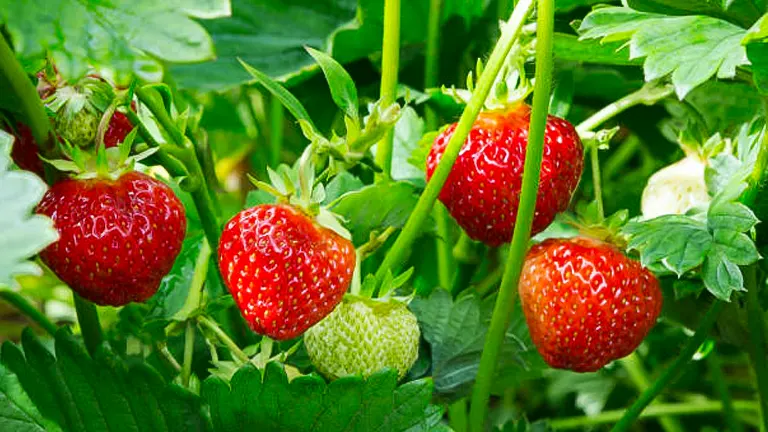
Discover how to select the perfect variety, create the ideal soil environment, and manage care through the seasons. Embark on your journey to a lush, bountiful strawberry garden today!
Table of Contents
- Choosing the Right Strawberry Varieties
- Site Preparation and Soil Requirements
- Watering and Feeding Your Strawberries
- Managing Pests and Diseases
- Maintenance Practices for Maximum Yield
- Harvesting and Post-Harvest Care
- Troubleshooting Common Problems
- Conclusion
- FAQs
Choosing the Right Strawberry Varieties
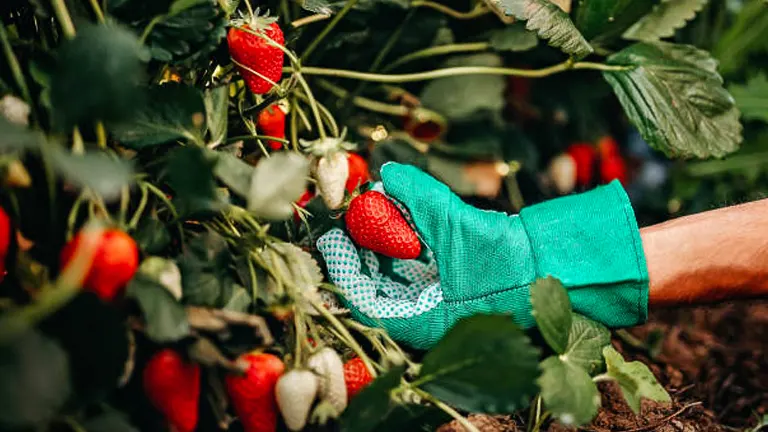
Selecting the appropriate variety of strawberries is crucial as it shapes your entire gardening experience—from the planting and maintenance to the joy of harvesting. Each variety of strawberry comes with its unique set of traits and requirements, influencing not only the yield but also how you will manage the plants throughout the seasons.
Understanding Strawberry Varieties
Strawberries come primarily in three types: June-bearing, everbearing, and day-neutral. Each type responds differently to climate, day length, and has distinct harvesting times, which can affect your choice depending on your gardening goals.
- June-bearing Strawberries: These plants are known for producing a single, large crop per year, usually over a period of three weeks in late spring. Ideal for those who prefer harvesting all at once, June-bearing strawberries produce large, sweet fruits that are perfect for making jams, freezing, or enjoying during the summer harvest season. They are particularly suited to areas with a distinct winter, as they need a cold period to initiate fruit development.
- Everbearing Strawberries: Unlike June-bearers, everbearing varieties produce two to three smaller crops throughout the growing season, typically in spring, summer, and late summer. These varieties are excellent for gardeners who enjoy fresh strawberries over a longer period without the overwhelming abundance all at once. They are ideal for continuous fresh eating and can be a good choice for those with limited space, as they often remain more compact.
- Day-neutral Strawberries: This type is the most flexible when it comes to sunlight and growing seasons. Day-neutral strawberries can produce fruit continuously from early summer until the first frost, unaffected by the length of daylight. This makes them particularly valuable in regions with mild climates where traditional June-bearing strawberries might not perform as well. They ensure a steady supply of berries, perfect for daily consumption.
Factors to Consider When Selecting Varieties
- Climate Adaptability: Some strawberries are bred to resist frost and thrive in cooler temperatures, making them suitable for northern gardens. In contrast, others perform best in warmer climates. Selecting a variety that matches your local weather conditions is crucial for plant health and fruit production.
- Space Requirements: The space available can significantly influence your choice of strawberry variety. June-bearing strawberries tend to spread through runners and might require more room to grow, making them less ideal for very compact spaces such as balconies or small raised beds. Everbearing and day-neutral varieties, often more contained in their growth, are better suited for smaller or vertical gardens.
- Harvest Purposes: Consider what you intend to do with your strawberries. If you’re looking forward to large-scale preserving or want to enjoy a bountiful harvest all at once, June-bearing varieties might be best. If you prefer to have fresh strawberries available throughout the season, consider planting everbearing or day-neutral types.
Site Preparation and Soil Requirements

The success of your strawberry plants begins with where and how you plant them. Strawberries thrive in sunny, well-drained locations where they can receive at least six to eight hours of sunlight daily. The right site and soil conditions are not just beneficial—they are essential for healthy growth and abundant fruit production.
Choosing the Best Location:
When scouting for the perfect spot in your garden, look for an area that provides ample sunlight and has good air circulation. These conditions help minimize the risk of fungal diseases, which strawberries are prone to. Avoid areas where water tends to collect; strawberries do not fare well in soggy soil. If your garden has heavy clay soil or poor drainage, consider raised beds or containers as viable alternatives that provide better moisture control.
Soil Preparation:
The ideal soil for strawberries is rich, loamy, and slightly acidic, with a pH between 5.5 and 6.8. Preparing the soil should begin well before planting:
- Testing Soil pH: Start by testing the soil pH to determine if any adjustments are needed. You can easily obtain a soil test kit from your local garden center or cooperative extension service.
- Enhancing Soil Quality: Incorporate generous amounts of organic matter like compost or well-rotted manure into the soil. This improves the soil’s structure, enhances its ability to retain moisture without becoming waterlogged, and provides essential nutrients.
- Ensuring Good Drainage: If drainage is a concern, mix in some sand or consider creating raised beds to elevate the plants and facilitate better water flow.
Planting Strategies:
Proper planting is crucial for establishing your strawberry plants. The timing and technique can significantly impact their development and yield.
- Best Planting Times: Generally, the best time to plant strawberries is in early spring or, in milder climates, in late fall. This timing allows plants to establish themselves and develop strong roots before the growing season kicks in.
- Planting Technique: When planting, ensure that the crown of the plant (where the stems meet the roots) is at soil level, and the roots are spread out well in the hole. Cover the roots with soil without burying the crown, as this could cause the plant to rot.
Plant spacing is also critical; place plants about 18-24 inches apart in rows separated by about 4 feet. This spacing allows for adequate air circulation and room for runners, which are vital for plant propagation and health.
By carefully selecting the ideal site and diligently preparing the soil, you create a foundation for robust growth and fruitful harvests. These initial efforts pay off throughout the life of your strawberry plants, making them less susceptible to diseases and better able to cope with environmental stresses.
Watering and Feeding Your Strawberries

Proper care in watering and feeding your strawberry plants is crucial for their growth and fruit production. The strategies you employ in managing these factors directly affect the health of your plants and the quality of the berries.
Watering Strategies for Healthy Strawberries
Strawberries thrive when the soil is kept consistently moist but not soggy. Because of their shallow roots, they require frequent, careful watering to maintain the ideal moisture level.
- Frequency and Amount: It’s generally recommended to provide strawberries with about 1 to 1.5 inches of water per week. This can vary depending on climate conditions; more may be necessary during periods of drought or less in cooler, wetter conditions.
- Method: Use a soaker hose or drip irrigation system to deliver water directly to the roots, minimizing water contact with the leaves and thus reducing the risk of fungal diseases. These systems help conserve water and target the moisture directly where it’s needed.
- Timing: Water early in the morning. This allows any water that gets on the foliage to dry out over the course of the day, which helps prevent fungal diseases that can thrive in moist conditions.
Feeding Your Plants for Optimal Growth
Nutrition is another critical aspect of strawberry care. The right fertilizers can encourage robust growth and abundant fruiting.
- Initial Fertilizer Application: At the start of the growing season, apply a balanced fertilizer (e.g., 10-10-10 NPK ratio) to help establish your plants. This provides an even distribution of nitrogen, phosphorus, and potassium, promoting strong root and leaf development.
- Fertilizing During the Growing Season: As the plants begin to flower and fruit, switch to a phosphorus-rich fertilizer to enhance berry quality and yield. Phosphorus supports robust fruit development and helps improve the overall health of the plants.
- Organic Options: For those preferring organic gardening, fish emulsion or composted manure are excellent choices. They release nutrients slowly, improving soil health over time and supporting plant growth without the rapid surges that chemical fertilizers can sometimes cause.
Managing Pests and Diseases

Maintaining the health of your strawberry plants is crucial for achieving a productive harvest. Effective management of pests and diseases not only protects the plants but also ensures the quality and abundance of your fruit. This integrated approach involves understanding common threats and applying preventative and reactive measures effectively.
Common Pests and Effective Control Measures:
Strawberries are attractive to various pests, each capable of causing significant damage. Here’s how to manage some of the most prevalent:
- Slugs and Snails: These pests are drawn to the moisture and sweetness of strawberries. Manage them by:
- Encircling plants with copper strips or crushed eggshells to deter movement.
- Setting up beer traps nearby to attract and drown slugs and snails.
- Aphids: These small insects suck sap, weakening plants. Control them by:
- Introducing natural predators like ladybugs into your garden.
- Spraying affected plants with organic insecticidal soap or neem oil.
- Spider Mites: These pests thrive in dry conditions and harm plant health by attacking leaves. Reduce their presence by:
- Regularly rinsing plants with water to dislodge mites.
- Applying horticultural oils if infestations become severe.
Addressing Common Diseases:
Diseases can spread rapidly and are often more challenging to manage once established. Key strategies include:
- Powdery Mildew: Identified by a white powdery residue on leaves, manage this by:
- Increasing air circulation around plants.
- Removing affected areas promptly to prevent spread.
- Using fungicidal sprays as a last resort, especially in severe cases.
- Botrytis Fruit Rot (Gray Mold): This affects fruits under humid conditions. Prevent and control it by:
- Ensuring plants are spaced to allow air circulation.
- Avoiding overhead watering to reduce moisture on fruit surfaces.
- Removing infected fruits and foliage to halt the spread of the fungus.
Preventative Measures:
Consistent garden maintenance is vital for disease prevention. Strategies include:
- Regular Inspections: Check plants frequently for early signs of trouble.
- Garden Cleanliness: Keep the area around plants free of debris to minimize habitats for pests and reduce fungal spore populations.
- Crop Rotation: Avoid planting strawberries in the same location as other berry crops were recently grown to prevent soil-borne diseases.
By integrating these management strategies, you can effectively reduce the impact of pests and diseases on your strawberry plants. Regular monitoring and proactive measures will help maintain a healthy garden, allowing you to enjoy a bountiful harvest of delicious strawberries.
Maintenance Practices for Maximum Yield
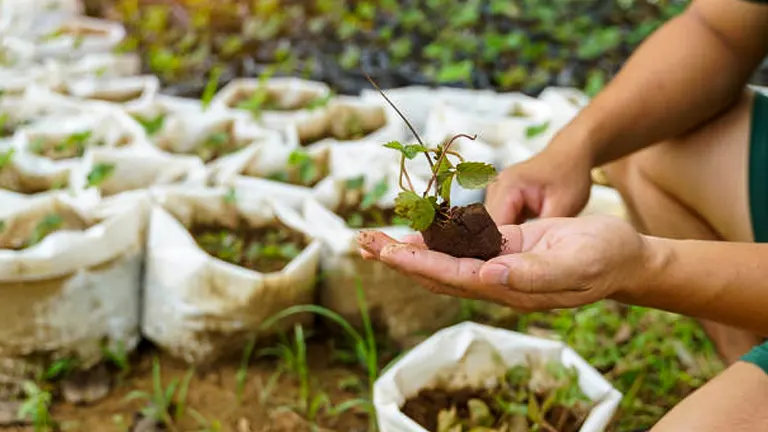
Maintaining your strawberry plants is an ongoing process that requires consistent attention throughout the growing season. By employing the right techniques, you can enhance plant health and fruit production.
Pruning and Runner Management
Strawberry plants produce runners naturally, which are horizontal stems that reach outward from the main plant and take root to form new plants. While runners can be beneficial for propagating new plants, managing them is crucial for maintaining fruit quality:
- Pruning Runners: Limiting the number of runners each plant produces allows the plant to focus more energy on fruit production rather than spreading. Prune excess runners to maintain about three to four per plant for an optimal balance.
- Renovating June-bearing Plants: After the harvest, prune older leaves, thin the plants, and mow the foliage down to about one inch above the crowns. This renovation helps rejuvenate the plants and encourages productive growth in the next season.
Effective Weed Control
Weeds compete with strawberry plants for nutrients, water, and light. Keeping your garden weed-free is essential for the health of your strawberries.
- Mulching: Apply straw or pine needle mulch around your plants. This not only suppresses weeds but also helps maintain soil moisture and keeps fruits clean by preventing direct contact with the soil.
- Hand Weeding: Regularly remove weeds by hand to prevent them from establishing. This is especially important around the base of the plants where weeds can be most competitive.
Seasonal Care
The care your strawberries require varies with the seasons. Understanding these needs is key to maintaining vigorous plants year-round.
- Spring: As new growth begins, clear away mulch from the previous year, and replace it with fresh material. This is also a good time to apply a light fertilizer application.
- Summer: Ensure plants are adequately watered, especially during hot, dry periods. Continue to monitor for pests and diseases.
- Fall: Prepare plants for winter by applying a heavier layer of mulch after the first few frosts. This helps protect the roots from freezing temperatures.
- Winter: In regions with severe winters, consider covering your strawberries with a winter protection such as agricultural fleece to shield them from the cold and from fluctuating temperatures, which can be particularly damaging.
Harvesting and Post-Harvest Care
The Art of Harvesting Strawberries
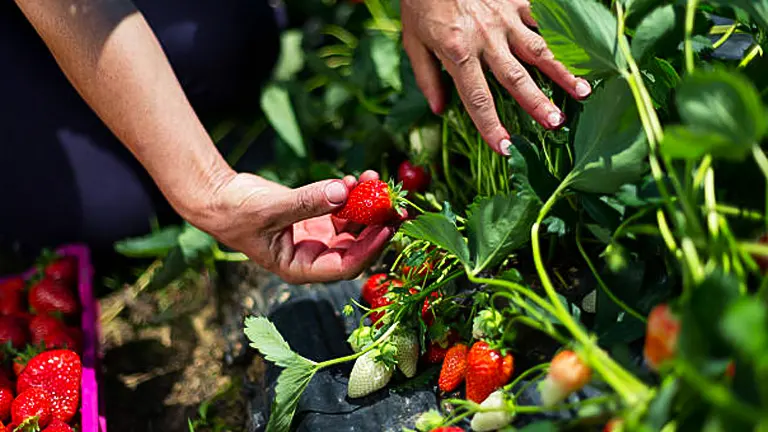
Harvest time is a celebration of your dedication and care throughout the growing season. Each berry you pick is a testament to the nurturing provided from seedling to fruit. As you step into your garden, basket in hand, under the gentle morning sun, the ripe, vibrant strawberries await.
- Timing Your Harvest: Look for berries that are uniformly red, a vibrant hue with a sheen that speaks to their juiciness. The best time to pick is when they’ve just reached this ripe perfection, typically a few days after they fully color. The early morning is ideal for picking; the cool air keeps the berries firm and extends their freshness.
- Technique Matters: Approach the task with gentleness—a soft touch is essential. Pinch the stem above the berry with your fingers, and with a gentle twist, the fruit should come away easily. Handle the berries as though they were fragile treasures to avoid bruising.
Savoring and Preserving the Bounty
Once harvested, your strawberries can be a fleeting delight unless properly stored and preserved. The goal is to capture their freshness for as long as possible.
- Immediate Care: If not consumed straight away, keep your strawberries fresh by storing them in the refrigerator. Place them in a single layer on a paper towel-lined tray or container to absorb any excess moisture, ensuring they don’t touch to prevent any spoilage from spreading.
- Longevity Through Preservation: For those who wish to enjoy the taste of summer in the colder months, strawberries can be preserved in several ways. Freezing is the simplest—wash and hull the berries, then freeze them individually on a tray before transferring them to freezer bags. This method preserves their shape and flavor, making them perfect for smoothies or winter desserts. Alternatively, turning your harvest into jams or jellies is a wonderful way to keep the essence of strawberries alive in your pantry.
Troubleshooting Common Problems
While the road to a bountiful harvest can be smooth, occasionally you may encounter bumps along the way. Understanding how to navigate these challenges not only enhances your gardening skills but also deepens your connection to the cycle of growth and renewal in your garden.
- When Berries Don’t Thrive: Sometimes, despite your best efforts, the berries may not develop as expected. If the fruits are small or poorly formed, consider whether they have been competing for resources. Thinning the plants may be necessary to give each the space and nutrients needed to flourish.
- Leaf Health: Yellow or browning leaves often signal distress, possibly from overwatering or nutritional deficiencies. Adjusting your watering schedule or conducting a soil test to check for missing nutrients can restore plant vigor.
- Persistent Pests and Diseases: Regular monitoring for pests and diseases is crucial. Early identification and intervention can prevent a minor issue from becoming a major setback. Keep a natural remedy toolkit on hand, including neem oil and organic fungicides, to manage problems effectively without resorting to harsh chemicals.
Related Post
- How to Fertilize a Mango Tree Effectively: Tips and Tricks for Healthy Growth
- How to Fertilize Apple Trees: Essential Tips for a Bountiful Harvest
- How to Fertilize Lemon Trees: Secrets for Thriving Citrus
- How to Fertilize Avocado Tree: A Step-by-Step Guide for Lush Growth
- How to Fertilize Bougainvillea: A Complete Guide for Stunning Blooms
Conclusion
In conclusion, growing strawberries offers a rewarding gardening experience that enriches your table with delicious, fresh fruit while enhancing your connection to the natural world. Through careful selection of varieties, diligent cultivation, and thoughtful maintenance, you can enjoy bountiful harvests that extend beyond mere consumption, fostering a deeper appreciation for the intricacies of plant life and the joys of gardening.
FAQs
- What is the best time of year to plant strawberries?
Plant strawberries in early spring or late fall, depending on your climate zone. In cooler areas, early spring planting after the last frost gives plants enough time to establish themselves before the winter. In warmer regions, planting in late fall allows the roots to settle in during the cooler months. - How do I choose the right strawberry variety for my garden?
Select a variety based on your local climate and the harvest schedule you prefer. June-bearing varieties produce a large crop in early summer, everbearing varieties produce several smaller crops throughout the growing season, and day-neutral plants produce fruit continuously almost all year round. - Can strawberries be grown in containers?
Yes, strawberries are well-suited for container gardening. Use a pot at least 18 inches in diameter with good drainage holes. Ensure you use a quality potting mix and keep the soil moist but not waterlogged. - How often should I water my strawberry plants?
Water strawberries deeply once a week to moisten the soil to a depth of about six inches. During very hot weather, you may need to water more frequently to keep the soil from drying out. - What type of fertilizer should I use for strawberries?
Use a balanced 10-10-10 fertilizer at planting time and then switch to a phosphorus-rich fertilizer when the plants start flowering to promote fruit development. Avoid high nitrogen fertilizers as they can promote excessive leaf growth at the expense of fruit production. - How do I protect strawberry plants from pests?
Use netting to protect plants from birds and mulch to help deter slugs and snails. For aphids and spider mites, use insecticidal soaps or introduce natural predators like ladybugs into your garden. - When and how should I prune strawberry plants?
After harvesting, prune out the older leaves, and thin the beds to allow room for growth and air circulation. Remove runners unless you want the plant to spread or you need to replace older plants. - What are the common signs of disease in strawberry plants, and how can I treat them?
Common signs include white powdery spots (powdery mildew), black or gray mold on fruit (botrytis), and yellowing leaves (could be several diseases or nutrient deficiencies). Improve air circulation, reduce overhead watering, and remove affected parts of the plant. Use fungicidal sprays as a last resort.
With these tips on how to grow and care for strawberries, you’re ready to cultivate a vibrant and productive garden. Enjoy the fruits of your labor and happy gardening!

Kristine Moore
Forestry AuthorI'm Kristine Moore, a seasoned garden landscaping professional with over 30 years of experience. My extensive career has been dedicated to transforming outdoor spaces into stunning, sustainable landscapes. With a deep understanding of horticulture, design principles, and environmental stewardship, I have become a respected figure in the field, known for creating harmonious, visually appealing, and eco-friendly gardens. My commitment to excellence and continuous learning in landscaping trends and techniques has solidified my reputation as an expert in garden design and implementation.






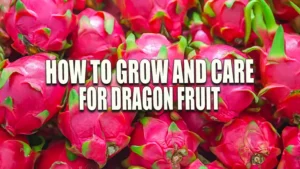





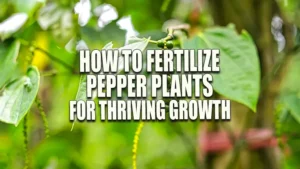
Leave your comment